
It’s time for another Indian 101 class! To learn more about this series, visit my Indian Cooking 101 page.
Whole Spices vs. Ground Spices
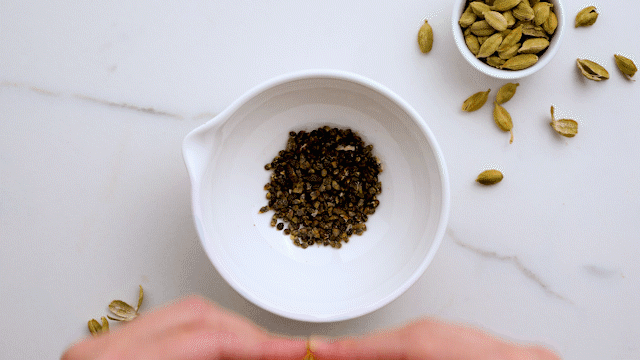
When it comes to spices, I prefer to buy whole spices and grind them myself using an inexpensive coffee or spice grinder though mortar pestle works too.
Whole spices last longer and maintain their flavor longer than pre-ground spices. They’re also cheaper to purchase when you buy in bulk. Using ground spices can reduce prep time, and if you use them regularly and continue to re-stock, you don’t have to worry as much about the loss of flavor.
Once you stock your kitchen with whole spices, they should last you a while.
People often mistake Indian food for being a complicated cuisine. I think part of the reason for this myth is due to the long list of unfamiliar ingredients that accompany most recipes. Once you familiarize yourself with the ingredients, you’ll be set to cook any Indian dish!
I’ve created an Indian Cooking section in my blog’s shop that you can check out. You can find a lot of what’s listed below in the shop.
Gather spices before cooking
When it comes to cooking Indian cuisine, read through the recipe once before starting. Gather all of the spices together in a small bowl so that when the instructions call for them, you’re not searching for several jars of spices at once. Prepping the ingredients beforehand can save you a lot of time and stress when preparing a meal. It can also help keep spices from burning.
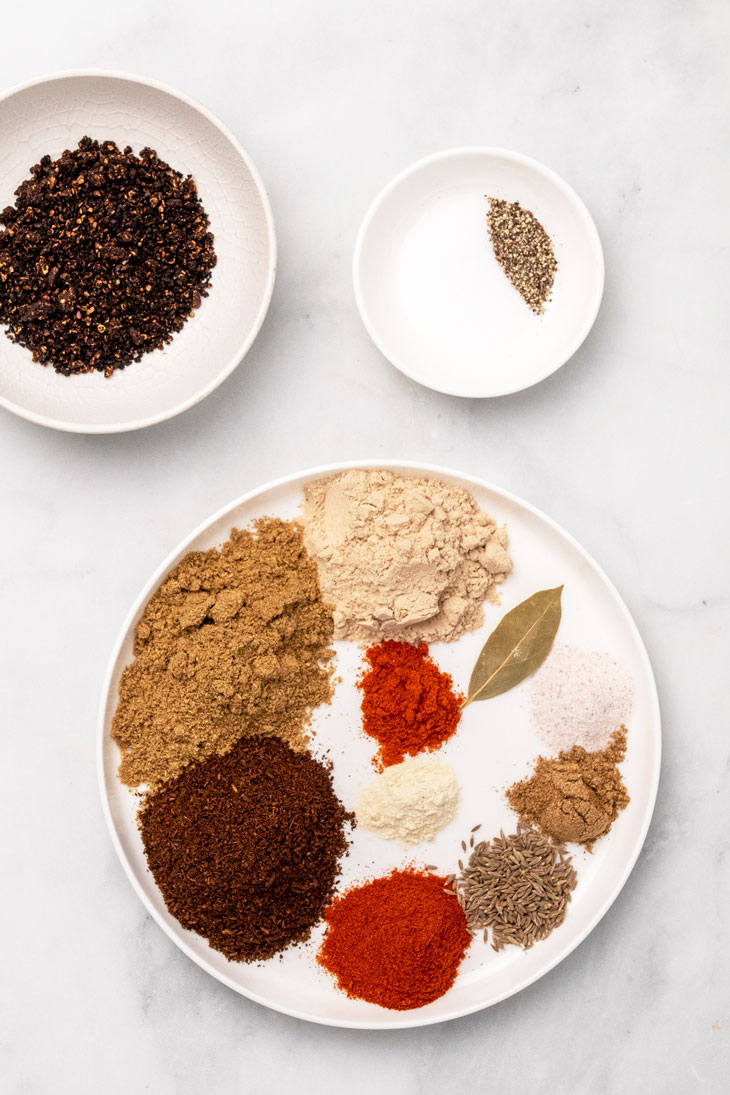
What does it mean to temper spices? What is a tadka?
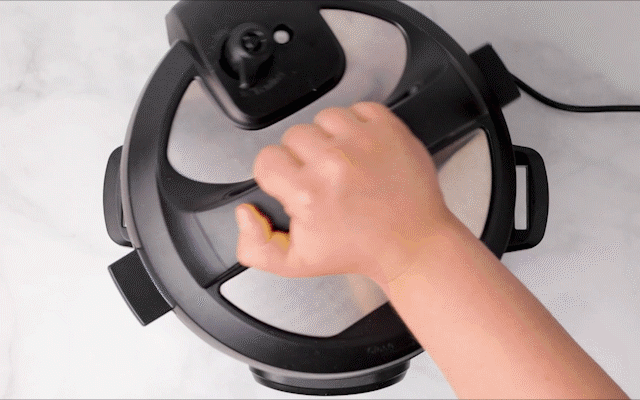
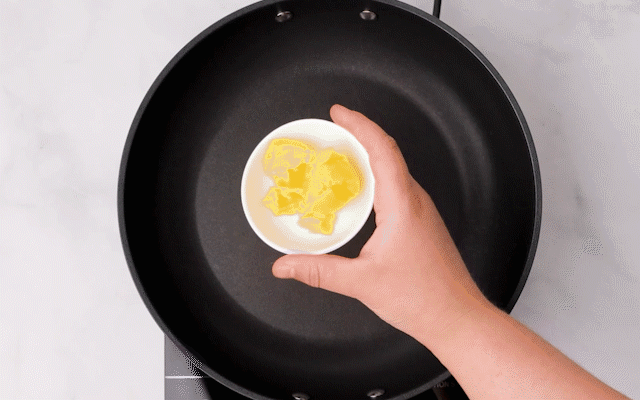
If you’re familiar with Indian cooking, you’ve probably heard of the word tempering or tadka or vaghar or chhonk. They’re all the same word for an Indian technique where you sizzle spices in hot fat like oil or ghee. This infuses the oil and makes spices more aromatic.
An Overview of Indian Spices
This is by no means an exhaustive list of all of the spices used in Indian Cooking. If I forgot to list a spice that you’d like to know more about, leave me a comment! Also, these are in alphabetical order, not in the order of what’s used most.
Anardana powder:
Anardana powder is ground up dried pomegranate seeds. This is a fruit used more like a spice to add a slightly fruity, tangy, and vibrant flavor to recipes. Some recipes (like my chikar cholay) call for roasting the powder first, making it very dark brown, nearly black in color; this helps add flavor and color to a dish.
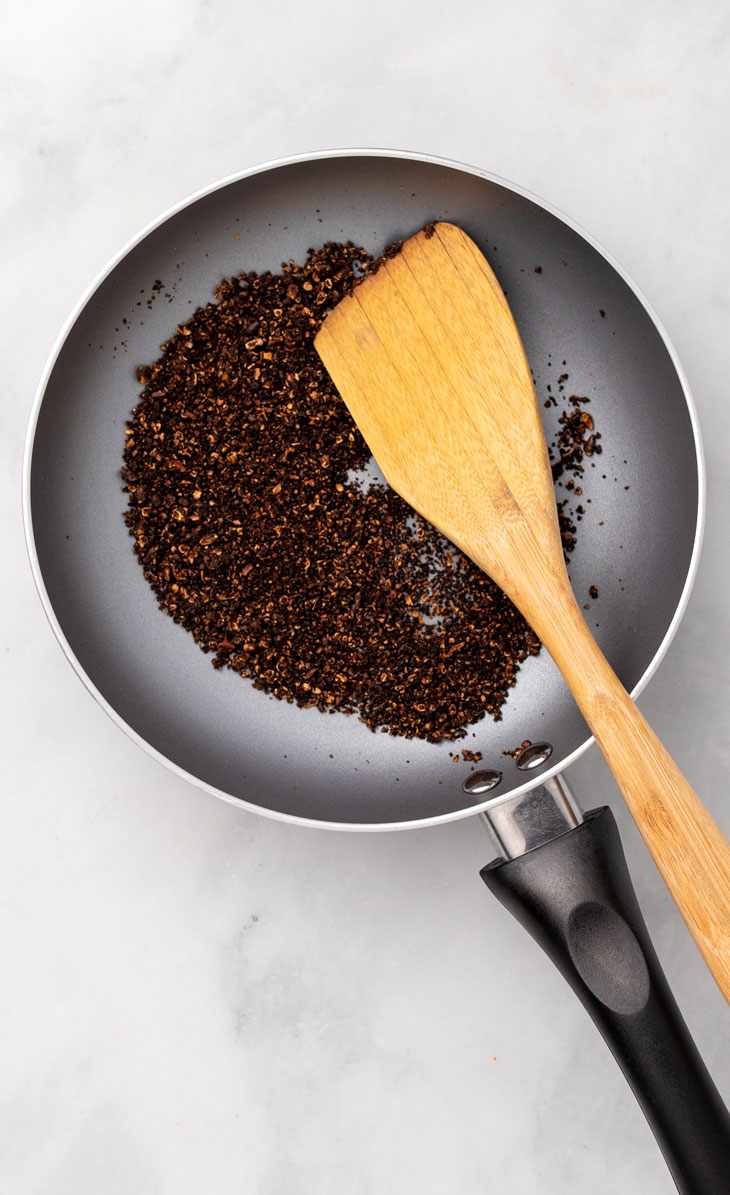
Amchur powder (dried green mango powder):
Amchur or Amchoor Powder is made from unripe green mangoes. It adds a tart and fruity flavor to recipes.
Bay leaf (Indian bay leaf, Tej Patta)
Indian bay leaves are longer and thinner than bay laurel leaves which are more commonly found in American grocery stores. Bay leaves break down as they cook and impart an herbal aroma to a dish.
Black cardamom:
Black Cardamom is larger than green cardamom and not as commonly used. It has a potent smoky aroma; use sparingly.
Black pepper (kali mirch)
It’s easy to overlook black pepper among all of the other spices used in Indian cooking, however, black pepper is very important to Indian cuisine. It’s the only pepper believed to be native to India and so originally, this is the spice that gave Indian food its heat. Some recipes call for whole black peppercorns and some call for ground black pepper. I suggest buying whole black peppercorns and grinding them yourself as the flavor is much more intense compared to store-bought pre-ground black pepper.
Black salt (kala namak):
Black salt (kala namak) is an Indian volcanic rock salt that is pinkish-grey in color and has a distinct salty, pungent, sulfurous aroma and flavor. It’s a spice that’s sometimes used in vegan recipes to mimic the taste of hard-boiled egg. It’s also often used in chutneys and chaat.
Brown or black mustard seeds:
Brown/Black Mustard Seeds are commonly used in Indian cooking and are more intense than yellow mustard seeds. Brown or black mustard seeds are typically first cooked in hot oil until they begin to pop or splutter. They are pungent, slightly spicy, and nutty.
Cardamom:
Cardamom (green) is warm, floral, and aromatic. It’s one of my favorite spices to use in sweets and also in savory dishes. The flavor and aroma of freshly ground cardamom is far more intense than store-bought ground cardamom. You can get away with store-bought ground cardamom in curries if necessary, but I highly suggest grinding your own cardamom, especially for desserts! Some recipes like chai or pulao or biryani will call for the whole cardamom, so be sure to keep those on hand as well.

Chaat Masala
Chaat masala is a salty and tangy spice blend used in chaat (Indian street food) dishes. It typically contains ingredients like black salt, fennel, cumin. Chaat masala can be an acquired taste for some but those who enjoy it, truly love its chatpata (spicy and tangy) flavor.
Cloves:
Cloves have a uniquely sweet and warm aroma, making them perfect for sweet and savory dishes.
Coriander:
Unlike cilantro leaves, coriander seeds are mild in flavor. Even if you’re a cilantro hater, give the seeds a chance. I find that coriander seeds to be sweet and nutty with subtle notes of lemon.
Cumin:
Cumin, a member of the parsley family, and has an earthy and smoky flavor. By first dry roasting the seeds in a skillet, you can intensify this flavor. Please also see “Roasted Cumin Powder” section below.
Curry leaves:
Curry leaves are from a plant, and they provide dishes with a unique smoky and citrus-like flavor and aroma. You can find fresh curry leaves at most Indian grocery stores or on amazon. I typically store extra leaves in a ziplock bag in my freezer and use them as needed (see my blog post on curry leaves vs. curry powder).
Curry powder:
Curry Powder is a name coined by the British during their rule over India. It refers to a blend of Indian spices that typically calls for coriander, cumin, turmeric, red chili powder as well as other spices. Curry powder does not contain curry leaves. (See my blog post on curry leaves vs. curry powder).
Fennel seeds:
Fennel Seeds: Fennel seeds are highly aromatic and have a sweet, licorice-like flavor.
Fenugreek leaves (kasoori methi):
Fenugreek Leaves (dried, also known as Kasoori Methi): This is the secret to getting homemade Indian food to taste restaurant quality. Dried fenugreek leaves (also known as kasoori methi) adds complex flavor to any curry or dish. It’s earthy, warm, sweet, and bitter. You can find dried fenugreek leaves at any Indian store and also on amazon.
Fenugreek seeds:
Fenugreek Seeds (methi seeds): fenugreek seeds have a bitter flavor and cannot be used as a substitute for dried fenugreek leaves.
Garam masala (north and south blends):
Garam Masala vs. Meat Masala: You will see both of these spice blends used on my website – they are not interchangeable. The garam masala that you find in stores is typically a north Indian blend. My homemade meat masala is different in flavor and is primarily used in south Indian cooking. Please make sure to use the right masala according to the recipe.
Hing (Asafoetida):
Hing (Asafoetida) is a spice that has a robust flavor reminiscent of garlic and onion and is often used as a substitute for those two ingredients. Hing adds an umami flavor to recipes and can be potent, so use sparingly. It also has a reputation for helping with digestion. Powdered hing is often blended with another ingredient, mostly wheat flour, so check the ingredients if you are gluten-free.
Kalonji (nigella seeds):
Kalonji (Nigella Seeds): Kalonji, also known as nigella seed or as onion seed, are small, black, triangular-shaped seeds that look similar to sesame seeds. They’re nutty, peppery, and pungent. They are often used in pickle or chutney recipes, and some restaurants will even add kalonji to naan bread.
Kashmiri chili powder:
Kashmiri Chili Powder vs. Cayenne: Cayenne is a spicy chili pepper that will add heat to a dish. It ranges from 30k-50k Scoville units. Kashmiri chili powder, on the other hand, is very mild and registers at around 2k Scoville units. Many recipes call for Kashmiri chili powder because it adds a bright and vibrant red hue to dishes. If you’re looking to substitute Kashmiri chili powder, then I suggest using paprika.
Mustard oil:
Mustard Oil: Mustard oil has a horseradish or wasabi-like flavor and is very pungent, so a little goes a long way. Mustard oil is popular in Indian and South Asian cuisine; however, it can only be sold as “massage” oil in the United States due to the erucic acid found in this oil. That said, this oil is becoming increasingly more popular, even among American chefs. You can purchase this oil in any Indian grocery store or on amazon.
Roasted cumin powder:
Roasted Cumin Powder is also known as bhuna jeera powder, is highly aromatic and has a more intense flavor than regular cumin. It’s a bit nutty and adds a unique flavor to recipes. Read this post to learn how to make this powder.
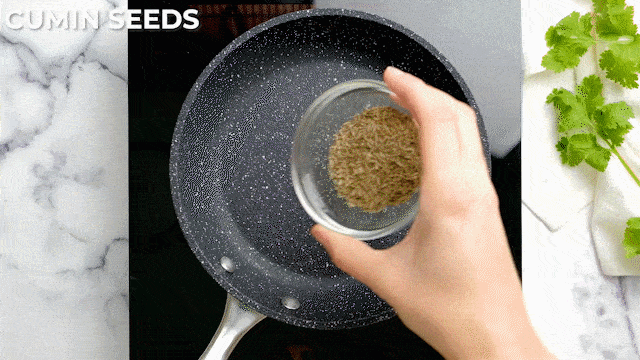
Saffron:
Saffron: Saffron, one of the most expensive spices on the market, requires just a pinch to impart its flavor and beautiful golden color onto any dish. Soak a couple of saffron threads in a tablespoon or two of warm water or milk before using it.
Star anise:
Star Anise: This star-shaped spice has a licorice-like flavor. While star anise and fennel seed are somewhat similar in flavor, I find star anise to be savory and slightly bitter, whereas I consider fennel seed to be sweeter.
Tamarind
Tamarind is sold as a paste and not a spice, but like a spice, it is used to add flavor to recipes. It is fruity and tangy.
Turmeric:
Turmeric, one of the most popular Indian spices, has a long history of medicinal use dating back thousands of years. It has a warm, peppery, bitter flavor and will add a bright yellow color to any dish.
If you missed the previous Indian 101 “class,” check out this post: Curry Leaves vs. Curry Powder

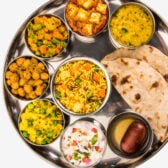

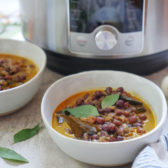
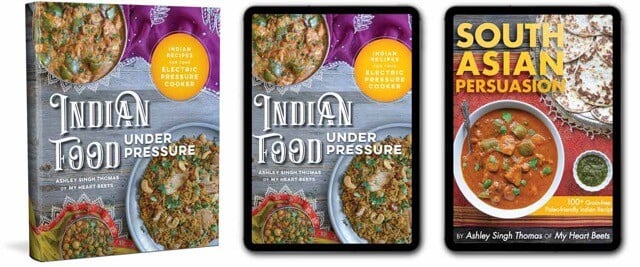

Cait says
Marrying into an Indian family, I’ve been learning all these spices but seeing it all written out has been so helpful! I’ll definitely come back to this as I go from blindly following recipes to cooking from my heart as I grow to know and understand the spices better. Spices are key to indian cooking!
Ashley - My Heart Beets says
Cait, I’m so glad to hear that you’re finding this post helpful – thanks for letting me know 🙂 And yes, spices are everything when it comes to Indian food!
MommaDuck says
Thank you so much for this! A lot of it I already knew, but one thing in particular was very useful. I’d never been sure about Kashmiri and Cayenne, and now I have it straight!
I’m right with you about grinding your own spices, and I just want to mention one other benefit to doing it, which should tip the balance if there is anyone left doubting whether they should grind their own fresh or not. Grinding your own spices adds such a wonderful scent not only to your kitchen, but also to your entire apartment or house. I am always happy when it is time to grind new spices because I know that not only will the food be delicious, but also my house will have a lovely scent to it for the rest of the day.
A little suggestion I might also add is that if you’ve been using grocery store spices, save the bottles! Once the grocery store spices are gone, you can reuse the bottles. I keep my bulk spices in a part of the house which is always cool and dark, and only keep half a bottle full of spices in bottles in the kitchen. The thing about saving the bottles and putting your cooking spices in them is that they are already labeled! No need buy bottles and put a messy tape label on them. There are times when you have to do that, but it’s kind of nice to keep that to a minimum in you’re “office,” which is what I consider my kitchen to be. It is where I do the work to make hungry mouths and tummies happy. You always want your office to be looking its best… clean, organized, and looking its best.
One last thing I must say is about the place on this page where it says “Related Recipes”. I don’t know if everyone’s page comes up the same or if it’s random, but the last one on my page says, “The Best Thing I Ever Made.” It also looks like the sweetest thing you have on here. The “Aww” factor is HUGE!. I’m absolutely certain that it’s the best thing you’ve ever made, and it will be unless and until you make another. Then there will be two best things ever! That’s a really precious recipe. If you age that recipe properly, it will only get better, even with the few frustrations that pop up along the way.
Oh, just remembered one other thing. For the new moms out there, yes, methi seeds are bitter, but they are also really great for milk production. It really helps with lactation. If you can bake them into sweets it cuts the bitterness and makes them palatable. I haven’t checked to see what recipes there are here which use methi seeds, if any, but if there aren’t any, it would be worth checking around on the Internet to find some because they are so very useful in that regard. They helped me immensely when I was nursing my son many years ago. If you need to produce more milk, give it a try!
Ashley - My Heart Beets says
Thank you for this thoughtful comment! I’m sure it will help others 🙂 And also, thank you for the kind words about the “best thing I ever made” – I currently have two littles who are just the best 🙂
Lizzie says
We’ve chicken saag for supper with our home grown spinach. The best recipe ever!!
Ashley - My Heart Beets says
Lizzie, that’s awesome! So glad to hear that 🙂
Mr B says
Hi. I’m in the overwhelm phase of indian cooking. First it was excitement that it COULD be easy — through the use of an IP, so i bought one.. — now the spices section feels long and arduous…
Without spending a fortune of stocking up on spices I may never use, can I just start with 5-10 in SMALL quantities, without this being like $100? I wish there was a kit of Indian spices I could buy so I don’t have to worry about this.
I haven’t made one dish yet, except rice, and I kind of screwed that up too. How, lol, I don’t know… It just doesn’t taste the same as an Indian home or restaurant — light and fluffy.
Regarding spices, your list has like 20+ spices. Which ones are absolutely essential? What spices do I need to make *the simplest dish*? For example, dal. I feel overwhelm because literally every dish has like 10+ spices, and every dish is different. Is there 5-10 ingredients that I can get that are in every dish, that will cover most everything, so that I’m not running out to the grocery store for that one spice all th time?
I wish I could make Indian with just 5 ingredients. Any tips?
Ashley - My Heart Beets says
Hi Mr. B – totally get the overwhelm. So, rather than buying all of these spices – I would suggest you choose 1 recipe, buy those ingredients and then slowly add as needed. I think it’ll feel less intimidating this way. Do you like butter chicken? If so, start with that dish – the spices in my recipe are some of the most commonly used spices. Feel free to ask questions here on the blog, or you can also join my FB group (Instant Pot for Indian Food) and ask questions there. The community there is super helpful.
Mr. B says
Thanks a bunch. I’ll try that strategy out. I’m a vegetarian and don’t consume eggs, so although I have a few criteria, I also have so many options, too — Indian cuisine is the king of vegetarian yumminess, no? 😉
Any suggestions?
Ashley - My Heart Beets says
No prob! Yes, Indian food has amazing options for vegetarian food. You can give my aloo curry a try – it’s a very simple recipe. You will need to get amchur (dried green mango powder) for the recipe but it’s a great spice to have – I use it very often. Keep me posted on your journey!
Ashley - My Heart Beets says
Ah sorry, I just realized I didn’t address your comment about dal. There are so many different types of dal, this one is very easy and it’s easily customizable: everyday dal. You can skip adding the mustard seeds in that recipe if you don’t want to invest in those yet. You can also use all red lentils (easily available at any grocery store) rather than the mix of red and yellow.
Jen Cooney says
Quick question… When a recipe calls for kasoori method, is the amount listed before or after you break them up in the palm of your hand?
Thank you!
My Heart Beets says
Hi Jen, it’s not going to make a big difference in a recipe, but I like kasoori methi, so I suggest measuring after you break them up.
Katelyn S. says
I was a waitress in Indian restaurants for 6 years. This experience with Indian food and people created a super strong emotional connection with the culture and cuisine.
I had tried (and failed) to make Indian food at home a few times over the years. Until I found your blog… The first dish I made was your Chicken Biryani for Instant Pot. I went to the Indian market near my house and spent about $40 stocking up on basmati rice and all of the necessary spices. I went into the recipe with high hopes and some trepidation. The moment when I opened the instant pot was magic! When the aromas hit my nostrils and I saw the steamed mint and cilantro resting on the rice, I was transported back to the table side at Amber India, cutting the naan off of a Dum Biryani and presenting the dish to my guests. I knew I finally had it right!
Since then, I’ve made several of your recipes. The success of bringing delicious and authentic Indian food into my home is absolutely addictive. I can’t thank you enough for empowering me to bring a culture that I love so much into my home to share with my family.
My Heart Beets says
Hi Katelyn, I’m so happy you found my blog! Thank you so much for sharing this with me – your comment was so nice for me to read 🙂
Priscilla S. says
What are your favorite brands when it comes to whole and ground indian spices? there are many here in the USA. Do you have a list? e.g. best garam masala brand? or turmeric? i think i struggle with ground garam masala the most as each brand has different taste and flavors. Also some indian spices add additives which i recently discovered so I am really in the look out for good quality , tasty and fresh spices. Whole spices can be a good idea but with 2 little kids sometimes its even hard to do that little prep work of buying whole spices and grinding. I do jeera powder at home though and its way better than store bought. SO please share your thoughts on some common spices like Garam masala brand, Dhaniya/coriander powder brand, Amchoor brand, tumeric and red chilli powders. Also a good chaat masala (used everest before).
My Heart Beets says
Hi Priscilla! I’ve tried a lot of brands – I don’t really have favorites for regular spices (coriander, turmeric, etc) but I do always opt for organic. Some of the brands I use are: Pure Indian Foods, 24 Mantra, Simple Organic and Frontier Co-Op. As for spice blends like garam masala, I prefer 24 Mantra or Simply Organic. I like 24 Mantra’s organic chaat masala too. Hope that helps 🙂
sofia comas says
Helpful List! I am a cooking learner and your blog helped me a lot. Many times, I get confused between some of the spices. Thank you for clearing my thoughts regarding it. Keep Sharing much more cooking ideas with us. Thank you..:)
Gordon says
Hi I have bought your book for use with my Instant pot and am gathering spices for the recipes. One thing I have not found in it is a recipe for Garam Masala. Do you have one?
My Heart Beets says
Hi Gordon, I’m so happy you have my book – I hope you’ll let me know what you think of any recipes that you try! 🙂 I actually have not shared a homemade garam masala recipe on my blog but I need to. Lately I have been buying organic garam masala from my Indian grocery store (really like the 24 Mantra brand). I’ll put a homemade version on my to-do list!
Alexandra says
This is such a great list. I really enjoy Indian food and recently started cooking it at home. I’ve only made a few recipes, but tend to make them weekly. Really enjoying your Indian Cooking 101; it’s very helpful. After I read about Curry Leaves vs. Curry Powder I went straight to the market and bought some curry leaves for a Dal Fry recipe. The curry leaves really make a difference. Thanks!
My Heart Beets says
Alexandra, I’m so happy to hear that you like the Indian 101 series! It really helps to know what blog readers find useful. Thanks for the feedback 🙂